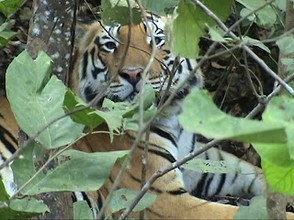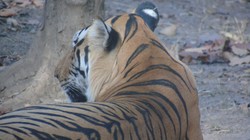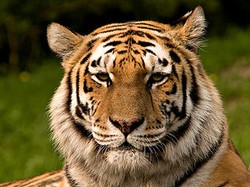A fearsome and charismatic predator, the tiger is one of the most beautiful animals in the wild. No wonder filmmakers and photographers flock to India's tiger reserves to capture images and make spectacular documentaries and videos for a lifetime.
The predator is surrounded by a mystical aura generated by folklore, shikar tales, and adventure stories. Fear throbs in every heart at the sight of the big cat, but surprisingly it is the most gentle creature on Earth. It kills only for food and keeps to its food chain in which man is not included. Occasional mean eating is an aberrant behavior with man-animal conflict the major culprit. Accidental man killing is often due to proximity and that is a defensive act.
Filmmakers and amateur videographers interested in wildlife are propagating awareness among the masses, and they enhance our knowledge of nature in the wild. Filmmaking with a focus on the tiger is an arduous task with skills and experience involved. Professional filming in the case of the big cats in India involves a team besides the requisite Government permissions. This page is about how to film tiger in the wild tackling travel issues and accommodations.











 Full Day Safari in Bandhavgarhon 08/29/2023
Full Day Safari in Bandhavgarhon 08/29/2023
 SEO Campaign: Website Overhaulon 02/13/2023
SEO Campaign: Website Overhaulon 02/13/2023
 Indian Food It Is Not All Curryon 02/08/2023
Indian Food It Is Not All Curryon 02/08/2023
 How Tiger Tourism is Organized in India?on 02/07/2023
How Tiger Tourism is Organized in India?on 02/07/2023



Comments
You can contact the tour operator or the hotel for the naturalist. You can hire both a guide and a naturalist.
pateluday, Thank you for practical information, pretty pictures and product lines.
Whom does one contact for a trained naturalist? Is it possible to hire both a guide and a naturalist?
Tigers are extremely possessive about their cubs, one should stay away from the big cats. They should feel safe. Drones are not allowed in critical tiger habitats. Large animals in the food chain are scared of the tigers. In some videos you can hear the alarm cries.
Are tigers protective of cubs, as are bears, so being too close would be dangerous?
Also, are drones allowed for aerial photographs and getting over inaccessible areas? The noise could disturb the tigers and any other animals, so perhaps they should be banned. I realize the tigers must eat, so other animals in the food chain cannot be scared from the region by noise.
Great insights into India, thanks for posting the article.